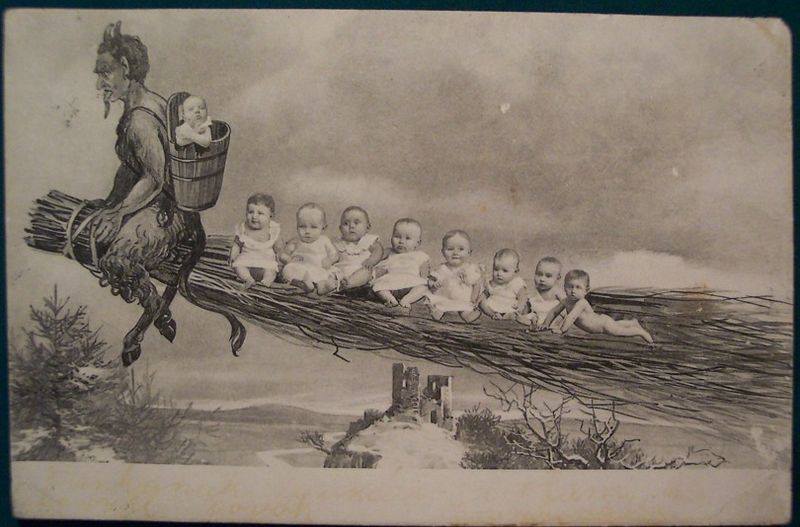In the European advent calendar, St. Nicholas (Mikuláš) pays a visit to children during the first week of December, bearing gifts of chocolate, walnuts, and oranges to the well behaved. The patron saint of prostitutes and thieves is traditionally accompanied by a devil (Čert) and angel (Anděl ), the former whose role is to carry “naughty” kids away in his sack — the threat of which tends to keep Czech kids in line throughout the year.
In general, the devils are cartoonish and friendly enough, often played by local teenagers out to earn pocket money. Others are leering demons straight out of the Krampus tradition. And while most families encounter this festive trio at organized events or schools parties, many invite St. Nicholas and company into their home for a private show.
PARTNER ARTICLE
Foreigners who aren’t familiar with the holiday or feel a bit uncomfortable with the Czech tendency to frighten kids with fairy tales characters like “Ježibaba” may be a bit shocked by these hellish hijinks, which usually end up with at least one or two kids in tears. (For the record, we have encountered some pretty creepy Santas in our day, too).
How to decide what’s too frightening for your child or whether to skip the holiday altogether? And what if, as part of a Czech couple, you’re expected to rise to the occasion?
Dr. Désirée Gonzalo, a Spanish clinical psychologist with a practice in Prague, says there are a few things parents should consider before participating in the more terrifying aspects of the St. Nicholas festivities. Those include your child’s age, demeanor, and whether or not he or she is able to grasp the symbolic nature of angels and devils.
[poll id=”16″]
“The child’s response to this kind of scaring will depend on various factors, such as the overall relationship the child has with the parent and if the parent hints that the threat is not real or if any playful elements are exposed,” she says.
Your little one’s developmental stage should also be considered, Gonzalo says, adding: “Individual maturity level can vary widely from child to child. Generally speaking, children can no longer be ‘fooled’ about certain things by age 8 or so, although this will happen earlier for some.”
And what about inviting the devil into your home?

Gonzalo says: “This suggests a lack of empathy [concerning] the child’s vulnerability and impressionability. I would suggest to parents who might be tempted to engage in this kind of behavior, to rethink the stress they can cause to their child and the damage to the child-parent relationship.”
She also notes that using the occasion as a parenting strategy to influence a child’s behavior is likely to backfire:
“A child needs to learn right from wrong either from natural consequences or from abstracting behavioral principles that are conducive to their and others’ well-being…not by having rewards given or taken away as punishment.”

Gonzalo encourages mixed-culture families to have a discussion about how to incorporate local or national traditions in ways that are not harmful, asking questions about what constitutes “scary” for each parent and, most importantly, for the child. Making the event about fun and connecting it with cultural tradition and community, not discipline, is the best approach to the holiday, she concludes.
In recent years, Czech psychologists have also weighed in on the custom — many of them confirming Gonzalo’s advice to skip the home visits while suggesting families steer clear of drunken devils; others believe that confronting fear (and feeling courageous) is a healthy part of childhood development.
For some family-friendly St. Nicholas events this week, see our events listings.












 Reading time: 3 minutes
Reading time: 3 minutes 






















